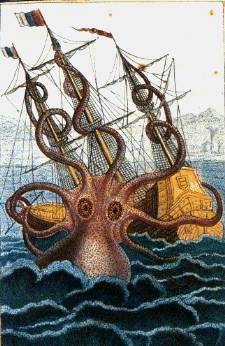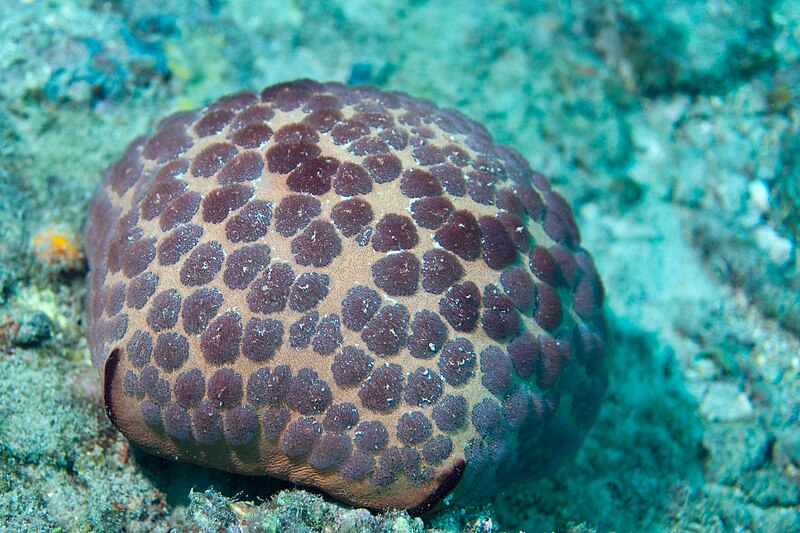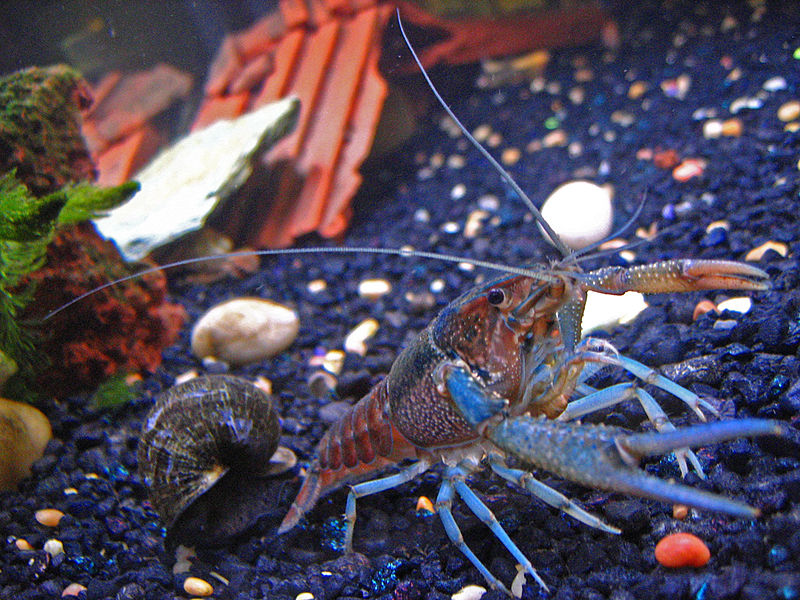 Hello, Frank Indiviglio here. For centuries, sailors have repeated the legend of the Kraken, an enormous octopus-like creature said to attack ships (please see artist’s recreation). Today we believe that such tales were based on actual sightings of real-life Giant Squids, which may exceed 60 feet in length (frightening, but never observed attacking ships…as far as we know!). However, recently uncovered fossil evidence suggests that a giant octopus actually may have haunted the Triassic seas – and that it was able to capture bus-sized marine reptiles known as Ichthyosaurs!
Hello, Frank Indiviglio here. For centuries, sailors have repeated the legend of the Kraken, an enormous octopus-like creature said to attack ships (please see artist’s recreation). Today we believe that such tales were based on actual sightings of real-life Giant Squids, which may exceed 60 feet in length (frightening, but never observed attacking ships…as far as we know!). However, recently uncovered fossil evidence suggests that a giant octopus actually may have haunted the Triassic seas – and that it was able to capture bus-sized marine reptiles known as Ichthyosaurs!
A Fossil-Hunter’s Mystery
Armed with saber-like teeth and reaching more than 45 feet in length, Ichthyosaurs were long thought to have been the Triassic Period’s top marine predators (please see photo of skeleton). However, recent findings have led some researchers to believe that something, perhaps a giant octopus, was able to make a meal of even these formidable beasts. Read More »
 That Fish Blog – Aquarium Advice and Information
That Fish Blog – Aquarium Advice and Information




